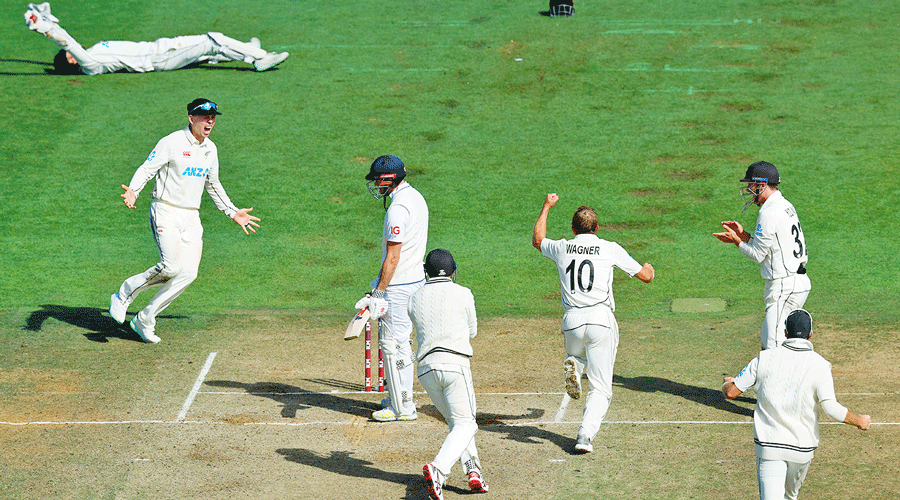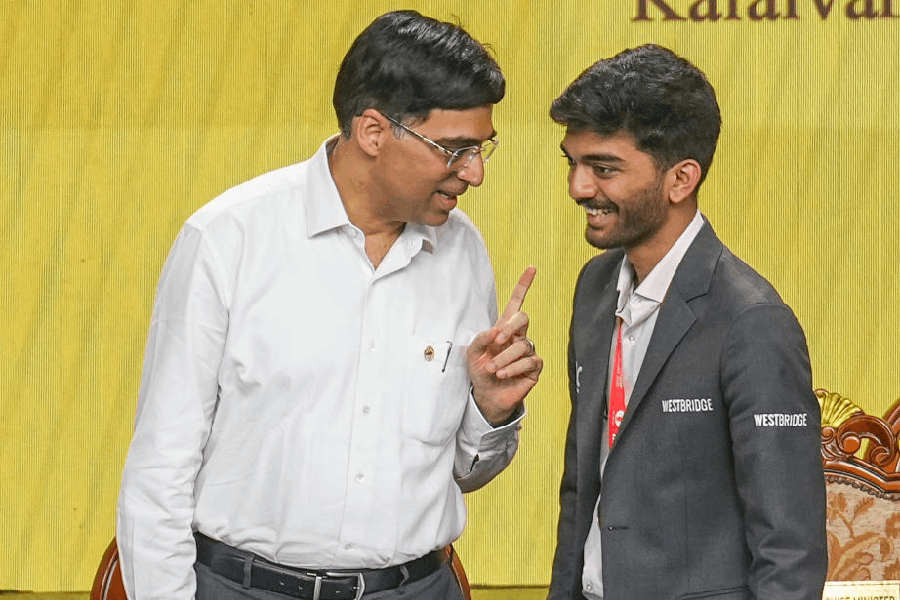The Wellington Test between New Zealand and England could easily have been the 786th drawn match in the history of the game.
Ben Stokes could have not enforced the follow-on after England sealed a 226-run first-innings lead, he could have given his bowlers a break and bat New Zealand out of the game. Or, after being reduced to 80/5 on the final day chasing 258, England could have shut shop and not gone for a win. With a 1-0 lead in a two-Test series, conventional cricket wisdom preaches that there was little need to take a risk.
But England nowadays are on a mission to switch-hit all such conventional theories that drive Test cricket, the grandfather format of the game. Coach Brendon McCullum and captain Stokes have stroked a rebellious approach to red-ball cricket which the world calls “Bazball”. It’s another story that neither of the two is very fond of the term, but there’s no denying that their aggressive method — or madness, if you are a purist — has taken world cricket by storm.
New Zealand’s one-run win — the only second such margin of victory after the West Indies’ one-run win over Australia in Adelaide in January 1993 — on Tuesday was definitely a tale of grit and fightback after being asked to follow-on. But would England have lost if they did not have the desire to win? No.
That then leads us to the question — is a draw in a Test match a desirable result in this age and time? Yes, if it is a thrilling draw, one of those nail-biting finishes where the batting team, all bruised and beaten up, tries to hang on for dear life on a fifth-day pitch and escapes the guillotine by the barest of margins. But that’s rare, it does not happen too often. If it’s a boring draw, which usually is the result of the passivity of one or both the teams aided by dull playing conditions, one doubts if the current generation of cricket enthusiasts would applaud.

England head coach Brendon McCullum on Tuesday. Getty Images
The romantics may scoff at such a thought, but is it not logical to expect a result — a win or a loss, not a draw — after five days and 450-odd overs of cricket? That too at a time when a T20 match gives you a winner after just 40 overs? Sitting through a five-day game which may not produce a result is not a case of glorious uncertainty these days, it’s a plain waste of time.
Don’t say there are draws in other sports, say for example football. For the spectator, a draw over 90 minutes is not the same as a stalemate after around 35 hours of a rigorous contest between the bat and the ball.
It is not a new debate by the way, neither is it a rambling of a T20-fed mind, many cricketers and experts have raised the topic from time to time. Justin Langer, the former Australia opener and coach, a few years back had cited boxing as an example of a sport where a winner can be decided even without a knockout blow. “If we take the draws out, and play a bit of day-night cricket, it’s all good for the game. A lot of people who don’t watch the game go, ‘how do you play for five days and not get a result?’ They just don’t get it. Usually, sport is about winning or losing, it’s not about drawing.”
Closer home, Virat Kohli, while he was the captain, had said: “I would not compromise on wanting a result in any situation... That’s (playing for a draw) not an option for me and will never be.”
But how to bell the cat? There’s a need to overhaul the system to do that. Surely, there are innovative brains in and around the International Cricket Council and the national cricket Boards all around the globe who can come up with ideas. They often do so for T20s, they must do it for Tests, which certainly needs more attention.
For starters, one can do away with the toss, or rather modify its practice. Flip the coin once before a series starts to decide which captain can take a call to bat or bowl first in the opening Test. After that, for the remaining Tests, the captains can take turns to have a say. Fix the maximum number of overs that a team can bat in each innings — and that can be different for different innings — and then ensure that if the chasing team fails to reach the target, they lose irrespective of the number of wickets they retain. For weather interruptions, bring in the Duckworth-Lewis-Stern formula. Or better, devise a new formula.
Before the purist in you digs out the loopholes in such proposals, here’s the disclaimer: the above ideas are just that, ideas. The experts surely can come up with better solutions.
But a solution seems a necessity. It’s not that Test cricket’s existence is at risk, it is not. But it is a spectator sport after all. People from varied walks of life — the travelling BarmyArmy fans, the local working-class lover of the game or even the school-bunking kid— were up on their feet in the stands as the final-day drama unfolded at the Basin Reserve. Test cricket needs them, and they need Test cricket to be like it was in this game.
“Bazball” can act as a catalyst to spark a revolution in the longest format of the game. Remember how a nondescript all-rounder and a daredevil wicketkeeper-batsman changed the way ODIs were played with their blazing partnership in 1996? That’s the Sri Lankan pair of Sanath Jayasuriya and Romesh Kaluwitharana, who taught the world how to start an innings in the 50-over game. “Bazball” can do the same for Test cricket.
“Bazball” England have won four of their last five away Tests. Bigger grounds, Ashespressure, subcontinental challenges or Neil Wagner-like-hostile short-ball strategy may trouble them going forward, but perhaps it’s time to play Test cricket differently.
For the record, 31.46 percent of all Tests played since1877 have been drawn. In other words, almost one-third of Test cricket as we know it has finished without a winner. Whose loss is it?










